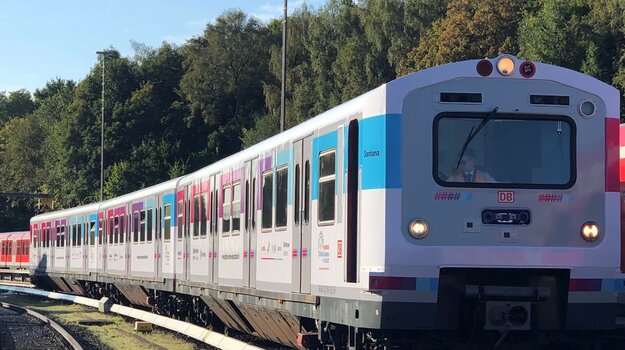Sensors for Relative and total Localization
High-Precision Localization of Trains for Optimal Control of Rail Traffic
In future, to facilitate the precise control of train traffic at all times and achieve optimal utilization of the existing network, the AI-based capacity and traffic management system must know the exact position of all moving trains. Innovative digital technologies are becoming established in this area too. In order to be able to reliably establish the precise location of a train, various independent location measurements usually need to be made and consolidated. From a technical perspective, sensors are used for relative and absolute localization. For relative localization, odometry systems – long established in the railroad sector – are used for speed and distance measurement. Path pulse generators, radars and accelerometers are proven sensors in the field of odometry. With absolute localization accomplished by trackside balises, train localization is further validated with the highest degree of certainty as the train passes over. Innovative technologies suitable for absolute localization include sensors such as Lidar, which perform high-frequency distance measurements to landmarks such as overhead catenary masts and are precisely located via a high-resolution digital map (HD map). These location measurements are supplemented by high-precision satellite navigation systems such as GNSS, which also provide absolute localization.
The Advantages at a Glance
New sensor-based technologies for relative and absolute localization on the rail vehicle are capable of precise real-time localization without requiring additional trackside infrastructure. For the digital railroad system, localization information can be transmitted to the traffic management system at a very high frequency and used on this basis to optimize train dispatch (CTMS). Precise, vehicle-side positioning in real time is also a key prerequisite for the Advanced Protection System (APS), which enables train-oriented route protection and driving in “moving blocks”. This can significantly increase the capacity of the railroad network. Here, too, a fast mobile communication connection and powerful cloud solutions are essential.
The Technology in Action
The Sensors4Rail project has successfully tested an absolute vehicle location system based on Lidar and digital maps for the first time. The data was successfully fed into a cloud environment and transmitted. The joint European CLUG (Certifiable Localization Unit with GNSS) project investigated and evaluated the use of GNSS for applications in the field of signaling and also, for instance, in automated railroad operations. The project also investigated the feasibility of multi-sensor fusion techniques using data recorded during test runs in Germany, France and Switzerland. The AutomatedTrain project is developing two prototype trains that have fully automated dispatching and parking functionality. This would not be possible without developments in relative and absolute localization.

